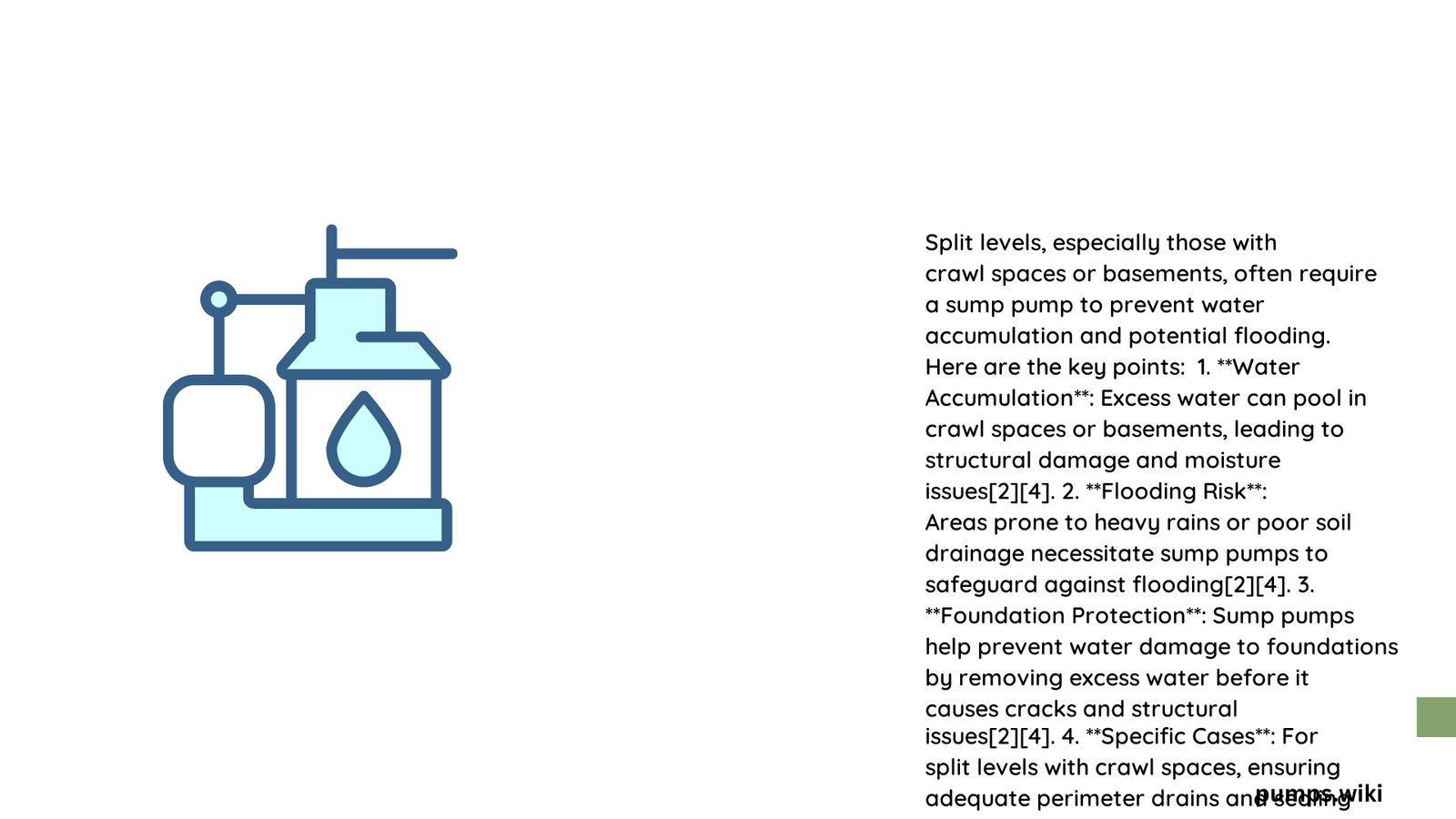Split-level homes present unique challenges in water management and basement protection. Determining whether a sump pump is necessary depends on multiple factors including geographical location, groundwater levels, soil composition, and historical moisture issues. Homeowners must carefully evaluate their specific environmental conditions to prevent potential water damage and maintain structural integrity.
What Determines Sump Pump Necessity in Split-Level Homes?
Are Geographical Factors Critical?
Geographical location plays a significant role in determining sump pump requirements for split-level homes. Key considerations include:
- Rainfall Intensity: Regions with high annual precipitation
- Water Table Proximity: Areas with elevated groundwater levels
- Terrain Characteristics: Low-lying landscapes prone to water accumulation
How Do Soil Types Impact Water Drainage?
Different soil compositions dramatically influence water management:
| Soil Type | Drainage Capability | Sump Pump Likelihood |
|---|---|---|
| Sandy Soil | Excellent | Low |
| Clay Soil | Poor | High |
| Loamy Soil | Moderate | Medium |
What Warning Signs Suggest Sump Pump Installation?
Homeowners should watch for these critical indicators:
- Recurring basement moisture
- Visible water stains on walls
- Musty odors in lower levels
- Efflorescence on concrete surfaces
Can Basement Configuration Influence Sump Pump Needs?
Split-level homes often have complex basement layouts that can complicate water management. Factors to consider include:
- Basement depth relative to ground level
- Existing drainage infrastructure
- Potential water entry points
- Slope and grading around the foundation
What Are Recommended Drainage Solutions?
Effective water management strategies include:
- Perimeter Drainage Systems
- French Drain Installation
- Exterior Grading Improvements
- Waterproof Membrane Application
How Expensive Are Sump Pump Solutions?
Cost considerations for split-level homes:
- Basic Sump Pump Installation: $800 – $1,500
- Advanced Drainage Systems: $2,000 – $5,000
- Annual Maintenance: $100 – $300
What Professional Recommendations Exist?
Experts suggest:
- Conduct professional moisture assessment
- Evaluate local climate conditions
- Consider long-term property protection
- Invest in preventative measures
Technical Specifications for Sump Pump Selection
Recommended technical parameters:
- Pump Capacity: 2,000-4,000 gallons per hour
- Horsepower: 1/3 to 1/2 HP
- Discharge Rate: Minimum 10 feet from foundation
- Power Source: Dedicated GFI electrical circuit
Are There Alternative Water Management Techniques?
Alternative strategies include:
- Improved exterior landscaping
- Gutter system optimization
- Foundation crack sealing
- Moisture barrier installations
Conclusion

While not every split-level home requires a sump pump, careful evaluation of individual circumstances is crucial. Consulting local water management professionals can provide tailored recommendations for your specific property.
